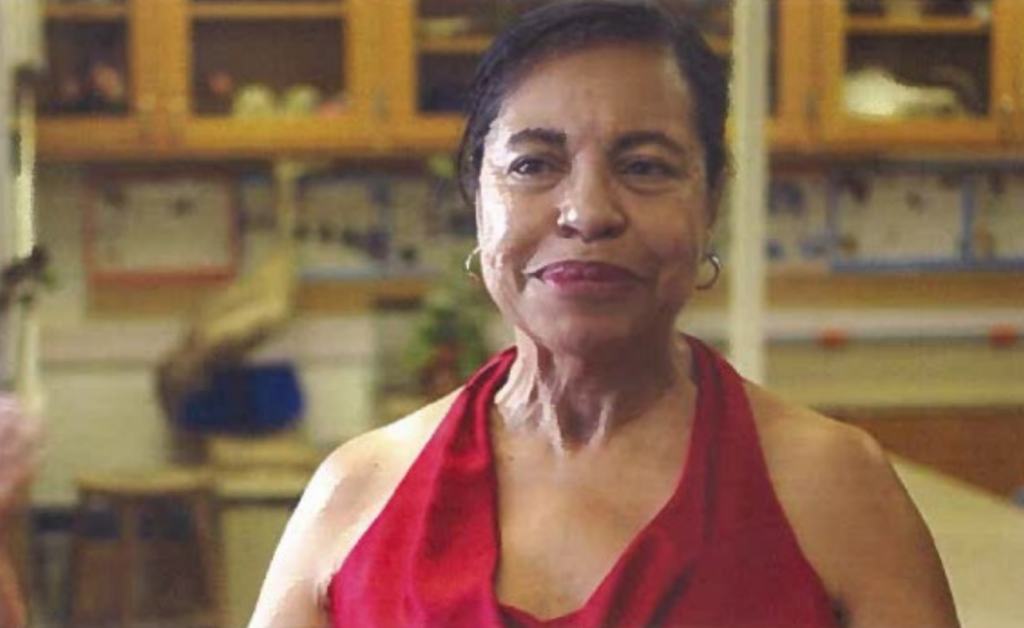Parks board blesses bathhouse renaming
Wednesday, February 28, 2024 by
Elizabeth Pagano More than 60 years ago, Joan Means Khabele jumped into Barton Springs Pool, launching a movement that led to its desegregation. Austin is now set to remember her legacy by renaming the Barton Springs Bathhouse after her.

Joan Means Khabele
After being denied entrance due to the racist rules in place at the time, Khabele is known as the first Black person to jump into Barton Springs. Her act of civil disobedience kicked off a “swim in” movement that took place in the summer of 1960 and, ultimately, led to the desegregation of the pool. A proposal to rename the bathhouse in her honor sailed through the Parks and Recreation Board on Monday, with a unanimous endorsement.
Several of Khabele’s grandchildren spoke in support of the name change at the meeting.
“I believe it is important to name the bathhouse in her honor, because it is important to acknowledge the contributions of Black Austinites,” said Lesedi Khabele-Stevens. “To take that a step further, not acknowledging Austin’s history in regards to racism and segregation – and those who fought against it – contributes to gentrification and the erasure of Black people in Austin. She had eight grandchildren in total and we were able to enjoy Barton Springs as a result of her heroic acts.”
Scott Cobb, who is a lifeguard at Barton Springs and the person who submitted the renaming application, spoke in support of the change. He praised Khabele’s courage in standing up to the violent, supported racism of the time, noting swimming pools “were one of the most contentious areas of the Civil Rights movement” though that wasn’t currently recognized at the springs.
“Currently, all the names associated with Barton Springs are white men,” Cobb said.
Comments from the board were brief but enthusiastic.
“It was a movement then, I think it can be seen as a movement now,” said Board Member Stephanie Bazan.
Chair Pedro Villalobos said that the new name was in line with his hopes to put a spotlight on communities that have been forgotten or unsung.
“We know who saved the springs, but we don’t know who desegregated the springs. And that’s as equally important today as it was in the 1960s,” he said. “To me, it’s a huge honor to have been a part of this.”
Parks and Recreation Department Director Kimberly McNeeley said that a public outreach process found 86 percent of those asked supported the name. As for the 14 percent that didn’t, McNeeley explained, “Most of the time, when folks said that they couldn’t support it, the reasons behind that was they felt that too much of old Austin was going away, or that we should just leave things the way that they are, instead of continuing to rename – that renaming itself was problematic.”
McNeeley explained that though there are two “features” of the building that already have namesakes – the BJ “Buster” Robinson Sr. Information Center and the Beverly S. Sheffield Education Center – those could remain in place as they do not conflict with the new name, which applies to the building itself.
The new name will now move to City Council for a final decision. That vote is tentatively scheduled for April.
The Austin Monitor’s work is made possible by donations from the community. Though our reporting covers donors from time to time, we are careful to keep business and editorial efforts separate while maintaining transparency. A complete list of donors is available here, and our code of ethics is explained here.
You're a community leader
And we’re honored you look to us for serious, in-depth news. You know a strong community needs local and dedicated watchdog reporting. We’re here for you and that won’t change. Now will you take the powerful next step and support our nonprofit news organization?







